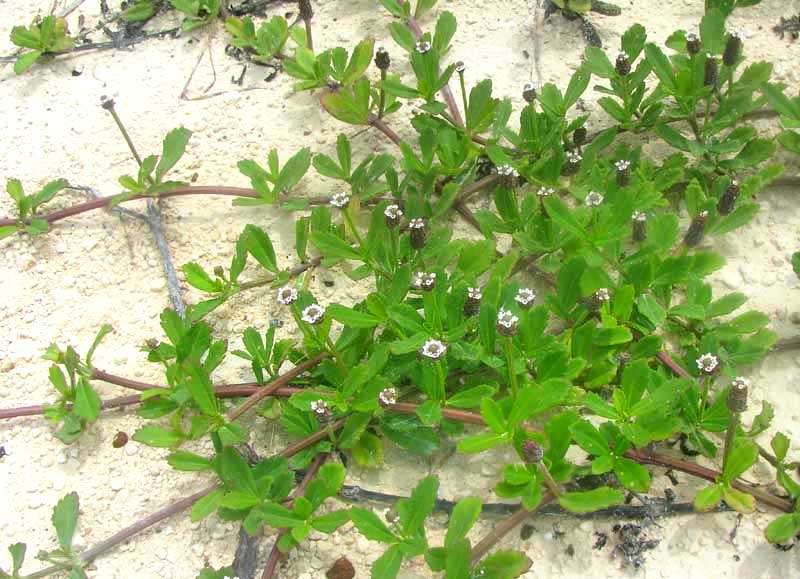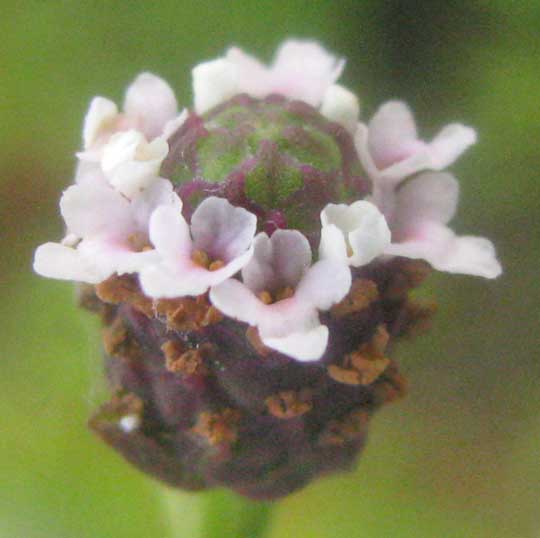Excerpts from Jim Conrad's
Naturalist Newsletter

from the July 3, 2011 Newsletter issued from Mayan Beach Garden Inn 20 kms north of Mahahual; Caribbean coastal beach and mangroves, ~N18.89°, ~W87.64°, Quintana Roo state, MÉXICO
TURKEY-TANGLE FOR DANDRUFF & PILES
Often you see a certain perennial herb's runners emerging from roadside weeds, inching onto the road, where car tires prune their tips by running over them. Overlapping runners sometimes form ankle-deep mats. Nowadays bean-size heads crowned with tiny, white flowers rise above the ground-hugging stems, as seen above.
A special thing about those egg-shaped flower heads is how the flowers open. First a ring of white blossoms appears at the bottom of the head, then as time passes the flower ring migrates up the head, leaving maturing ovaries bearing brown, shriveled-up corollas below, even as not-yet-open, immature flowers remain above. You can see a middle-aged head with a ring of tiny, white flowers situated about 2/3rds up the head below:

This native of the American tropics and subtropics has become a weed throughout the world's hot and warm lands. Residing in many English-speaking countries, it goes by many English names, including Creeping Frogfruit, Sawtooth Fogfruit, Matgrass, Capeweed, Matchweed, and Turkey-tangle. It's PHYLA NODIFLORA, a member of the Vervain Family, the Verbenaceae. In botanical literature the words "fogfruit" and "frogfruit" have been used more or less interchangeably.
While Googling the species I encountered a website in India specializing in natural medicine and calling the plant Poduthalai. It said that Poduthalai is a natural cure for dandruff, piles, leucorrhoea, ulcers, and more. For piles, which these days in the US has been glorified with the name hemorrhoids, it suggested a "chutney" concocted of its leaves. Also the leaves can be ground into a paste and applied to the scalp for dandruff.